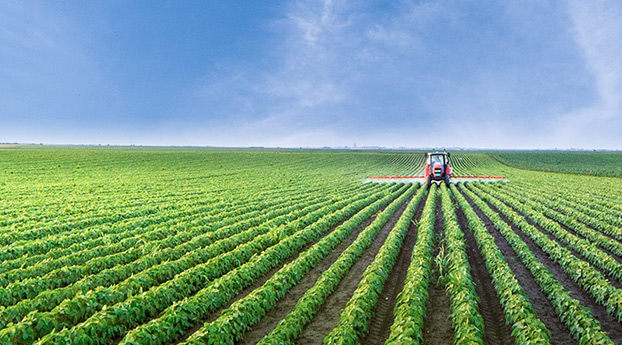Comparison of stormwater management between China and foreign countries
Release time:2015-09-06 Views:303
Introduction: Waterlogging disasters occur in domestic cities whenever there is heavy rain. The torrential rain makes the urban drainage system collapse instantaneously. "Looking at the sea" becomes a helpless joke after the rainstorm. With the rapid development of urbanization and national economy, the unidirectional circulation of water resource, shortage of water resource and pollution of water environment are becoming more and more serious. Attaching importance to water resources, recycling water resources, rational development and utilization, effective protection and comprehensive management, has reached an urgent stage.
First, the development of rainwater management abroad
Foreign attitudes towards rainwater have undergone a change from fear and disgust to friendly utilization, from single drainage to comprehensive utilization, and from a simple engineering solution to a combination of engineering and non-engineering. Its development process can be roughly divided into three relatively independent and interleaved stages.
The first stage is the stage of drainage and flood storage. In the early 19th century, the rainwater system only built canals to collect and transport rainwater and sewage to nearby surface water bodies, so as to discharge rain and sewage as soon as possible and avoid waterlogging and flooding disasters.
The second stage is the point source pollution control stage. In the 1960s, western cities grew rapidly, became increasingly polluted, and were unable to fundamentally eliminate flooding. To this end, western countries have carried out "point source" pollution control, namely sewage treatment. This measure quickly and efficiently discharged the rain pollution from the city, centralized treatment, in a certain period of time has achieved very good results.
The third stage is the sustainable stormwater management stage. The traditional "point source" treatment method has been difficult to adapt to the current situation of surface runoff pollution and runoff increase brought by urbanization. In the 1980s, Germany began to pay attention to the control of rainwater runoff pollution, "zero runoff growth". In the United States, the revised version of the Water Pollution Prevention and Control Act in 1987 and the National Urban Runoff Report issued in 1986 shifted the attention to the treatment of rainwater pollution, which was gradually improved in the future practice.
By the 1990s, the stormwater management system was guided by the values of sustainable development and ecological conservation. Stormwater management is not only from the human perspective, but also from the ecological protection, urban sustainable development, economic win-win and other perspectives, hoping to create a more multifunctional, friendly and sustainable living environment.
Second, foreign rainwater management concepts
The United States: "Best Stormwater Management Practices" (BMPs: BestManagement Practices) and "Low Impact Development" (LID: Starting from respecting nature and restoring the role of natural mechanism in the city, Low-impactDevelopment is trying to expand the space and capacity of "rainwater storage", absorb a considerable amount of rainwater in the catchment area as far as possible, and regulate and restrict human construction activities, so as to reduce the destructive impact of human activities on the original ecological environment. Seeking a balance between development needs and environmental protection.
Australia: "WSUD: WaterSensitive Urban Design" combines rainwater management with urban design, combining many different design measures into a "toolkit", providing a set of common management methods for urban construction and urban water cycle. On the one hand, the design takes the water cycle as the core, regards the urban water cycle as a whole, takes rainwater, water supply, sewage (reclaimed water) and other links into consideration, and effectively coordinates the relationship among the health of water ecosystem, storm water management, pollution control and economic development. On the other hand, encourage the use of storage and collection treatment devices to increase runoff reuse, reduce runoff and peak discharge, reduce runoff pollution, and enhance social, cultural and ecological values through the organic integration of multifunctional green space, landscaping and water recycling.
The United Kingdom: The aim of SUDS (Sustainable Urban Drainage System) is to create a sustainable drainage system that balances economic development with environmental protection and maintains a healthy water cycle, From the surface water treatment and discharge of water flow, water quality and environmental comfort three aspects of comprehensive consideration, in order to solve the problem of rainwater management is a combination of engineering and non-engineering management ideas and methods.
BMPs and LID in the United States firstly start from the perspective of natural environment protection and predispose rainwater runoff from macro urban design to micro site design to minimize the interference of human activities on natural environment. Secondly, we should consider the urban environment optimization of rainwater facilities and not increase the intensity of urban development deliberately. In Australia, WSUD considers rainwater discharge and treatment from the perspective of urban construction and water recycling, and regards rainwater as a precious water resource. Collecting rainwater from the source to the receiving water body reduces the pressure of urban water supply, which is an optimization of urban operation. British SUDS focuses on solving the problem of coordinated development between urban development and environmental protection. In urban construction, the overall consideration is given to the on-site infiltration treatment, collection and utilization of rainwater. In ecological protection, the potential of existing drainage facilities is released to increase the construction capacity of the city as much as possible. In addition, many other countries have made some exploration in rainwater regulation, storage and utilization, and achieved fruitful results. These studies and effective practices have confirmed the effectiveness of the world's advanced rainwater management concepts, greatly enriched the application scope of the rainwater management concepts, and provided important reference significance for further promoting urban rainwater management.
Comparison of rainwater management at home and abroad
Regardless of the specific management methods, from the movement process of rainwater runoff from the ground to the receiving water body, the root of advanced rainwater management abroad lies in two basic parts -- "source control" and "downstream control". The process of rainwater before it enters the urban pipeline is the focus of "source control", the concept of which is to control the discharge time of rainwater, either in situ infiltration or temporary storage, "so as to achieve the effect of peak cutting, flow reduction, purification of stormwater runoff and replenishment of groundwater". "Downstream control" refers to the process control of rainwater after it enters the pipeline, which is the water volume regulation and preliminary treatment of rainwater and sewage. In the middle and lower reaches of the drainage system, appropriate locations are selected to be set up as temporary storage tanks for rain pollution to reduce the overflow frequency of rain pollution, and to initially remove pollution and improve water quality. Downstream control is the traditional rain pollution treatment method in various countries. In Paris and Japan, large-scale underground water storage equipment has been built, which can successfully regulate urban rainwater discharge in rainstorm and reduce or even eliminate urban waterlogging. Although domestic stormwater management has begun to come into the vision of leaders, the transformation and improvement work is very complicated and arduous in view of the complex urban status quo.
Our traditional rainwater discharge system is based on the experience of urban construction in Soviet Union, the standard of drainage is low, the design method is backward, the design concept is basically in the level of the developed country in the 1960s, with an eye to sewage treatment, regards the rainwater as pollution-free waste, and allows it to discharge freely into the water body, and even considers that only designing the rainwater diversion system can solve the problem of rainwater. The problem of rainwater cannot be solved systematically. There are some differences in the concepts and methods of rainwater management at home and abroad. Based on the understanding of domestic stormwater discharge problems, when introducing foreign excellent stormwater management methods, it is more important to distinguish between regions and social and economic conditions, and adopt forward-looking and realistic planning and design methods for different regions and different stages of social development.
In order to fundamentally promote the progress of rainwater management, we must start from the guiding concept, change the concept of "discharge as soon as possible, no pollution of rainwater", take rainwater as part of the city to manage and control, not only guide rainwater management from the top down, but also publicize the concept of rainwater collection and utilization, enhance public participation, and save water resources. The government should set up special funds or preferential policies to support the development of rainwater utilization industry, mobilize the enthusiasm of developers and enterprises and institutions, and vigorously develop the "water industry". As for the research results, the government should increase support and promote innovative technologies as soon as possible, so that the research results can actually contribute to the future of the city. Planning, as the leader of urban construction, must first consider the relationship between rainwater cycle and urban development in all aspects of urban construction, and guide urban construction from macro flood risk control and watershed flood control to micro construction of new areas and reconstruction of old areas. At the same time, the stormwater management system must also consider the needs of local communities, and combine with urban public activity space and landscape design, not only to increase the entertainment of stormwater management facilities and beautify the city appearance, but also to provide habitat for wild animals and plants in the waterways and river channels of urban areas.
(Source: From International Urban Planning, Issue 1, 2015, author: Zhang Yupeng)

















